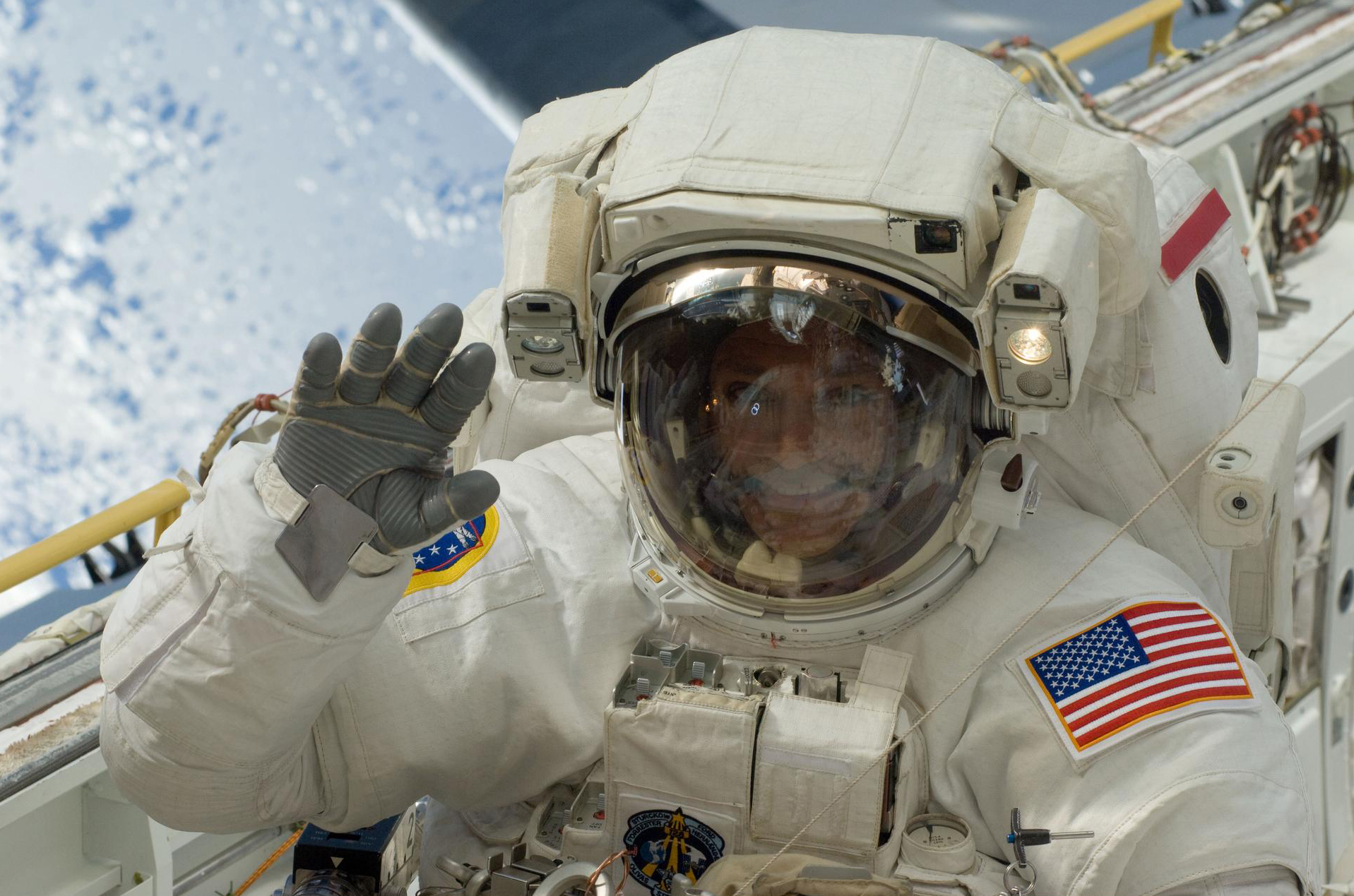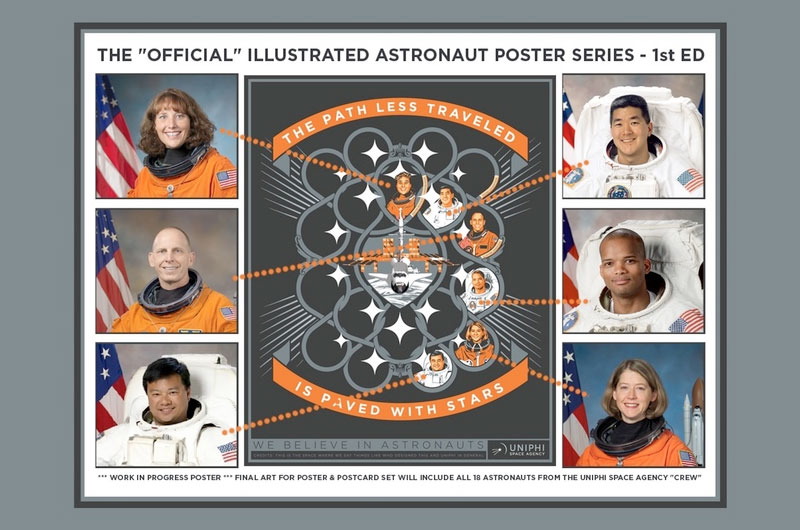Shuttle astronaut Danny Olivas talks diversity on Earth (and space) in 'Virtual Astronaut' webcast Wednesday

After personally seeing how NASA's space shuttle program advanced diversity and inclusion in the astronaut corps, two-time shuttle astronaut John "Danny" Olivas will host a virtual talk about how working for diversity improves equity and opportunities for organizations more generally.
You can catch Olivas' talk on Wednesday (Oct. 14) at 7 p.m. EDT (2300 GMT), and tickets are now available here, starting at $20. The Virtual Astronaut is a new series of astronaut talks that allow spaceflyers to communicate their message with worldwide audiences during the novel coronavirus pandemic.
"When people talk about space, they think about it in an ethereal perspective – very pure, very life-changing. But at the end of the day, it's a human endeavor," Olivas told Space.com. "But it's the same human endeavor our country has embarked on time and time again."
Olivas became fascinated with space around age seven, in 1973, as the Apollo program worked towards its last mission (a joint NASA-Soviet mission called Apollo-Soyuz) and as NASA's series of Skylab space station missions began.
Related: In pictures: The most memorable spacewalks in history


To learn more about the Danny Olivas' Virtual Astronaut webcast, including how to get tickets for a personalized experience, visit here.
"As a child of the late 1970s and early 1980s, I didn't necessarily have the same exposure to [astronaut] role models that had the same experience I did," the Hispanic-American Olivas said, as prior to shuttle, the early NASA astronauts were white male Americans.
But the space shuttle program widened opportunities to people of a wider variety of backgrounds, he added. "The shuttle program really brought forward, really resonated with me, that … there were opportunities that I could look at in the cadre of astronauts, and see a diversity that we see in our society in them," he said.
Get the Space.com Newsletter
Breaking space news, the latest updates on rocket launches, skywatching events and more!
The space shuttle flew 135 missions between 1981 and 2011. And, while the shuttle was only partially reusable and did not live up to the promise of reducing space mission cost that NASA and its partners hoped would happen, it did bring another benefit to the space program: it reliably flew large crews of people to space over and over again, including an astronaut corps than was more diverse than ever before.
International astronauts began flying in the early 1980s, serving as payload specialists responsible for a small number of experiments. Starting in 1992, they gradually accumulated responsibilities to become mission specialists (eligible for tasks such as spacewalking). At first, NASA brought these astronauts on board to prepare for the international Freedom space station program, but the cost of the program ballooned and it was scrapped in favor of an International Space Station after the Soviet Union fell in 1991.
The shuttle was used as a tool to test out space station operations, principally by bringing Americans to the former Soviet space station Mir to perform long-duration missions side by side with Russian cosmonauts who also flew on NASA-led shuttle missions. These flights allowed the principal space station partners, America and the then Soviet Union, to learn how to train and fly together ahead of starting construction on the new International Space Station in 1998. This October, the space station celebrates 20 years of continuous long-duration human occupation, which began in 2000.
Besides the international component of space shuttle missions, the spacecraft ferried an ever-more diverse group of people into space. Some of these cultural milestones include the first NASA woman astronaut (Sally Ride), the first-known LGBTQ+ astronaut (also Sally Ride, although this was not known publicly until after her death in 2012), the first African-American astronaut (Guy Bluford) and the first Hispanic astronaut (Chang Díaz).
It was because of the space shuttle that Olivas began to see more of a place for himself in space. He became a technical specialist, as many of the shuttle astronauts were, rapidly accumulating degrees and graduating with a doctorate in mechanical engineering and materials science from Rice University in Texas. He also worked while pursuing his education, such as doing C-5 aircraft maintenance operations at Kelly Field (then Kelly Air Force Base) in San Antonio. He also worked at NASA's Johnson Space Center in Houston, evaluating materials for spacesuits.
After getting his doctorate in mechanical engineering and materials science, Olivas received a senior research engineer position at NASA's Jet Propulsion Laboratory to evaluate microelectronics and structural materials for harsh space environments. He was promoted to program manager of the JPL advanced interconnect and manufacturing assurance program before being selected as a NASA astronaut in 1998.
While most astronauts receive public attention during their time in space — which, for Olivas, included five spacewalks devoted to space station construction between STS-117 in 2007 and STS-128 in 2009 — he said he is most proud of one of his duties on the ground. That was evaluating technical faults in hardware that flew on the space shuttle with an eye to making that hardware more reliable for future space missions.
"When there were issues that came up, which we didn't anticipate or were surprised by and things broke, I would try to understand what happened and determine what the impact would be to the program's astronaut office," Olivas said.
Olivas' virtual talk will be held in support of El Paso Matters, an independent, member-supported nonprofit news organization focusing on in-depth and investigative journalism in the city of El Paso, Texas, which Olivas considers his hometown.
"I'm very impressed with the media, especially the independent media out there, trying to dig up the stories and bring out what's really important for society to hear beyond the mainstream media," he said.
Follow Elizabeth Howell on Twitter @howellspace. Follow us on Twitter @Spacedotcom and on Facebook.
Join our Space Forums to keep talking space on the latest missions, night sky and more! And if you have a news tip, correction or comment, let us know at: community@space.com.

Elizabeth Howell (she/her), Ph.D., was a staff writer in the spaceflight channel between 2022 and 2024 specializing in Canadian space news. She was contributing writer for Space.com for 10 years from 2012 to 2024. Elizabeth's reporting includes multiple exclusives with the White House, leading world coverage about a lost-and-found space tomato on the International Space Station, witnessing five human spaceflight launches on two continents, flying parabolic, working inside a spacesuit, and participating in a simulated Mars mission. Her latest book, "Why Am I Taller?" (ECW Press, 2022) is co-written with astronaut Dave Williams.









